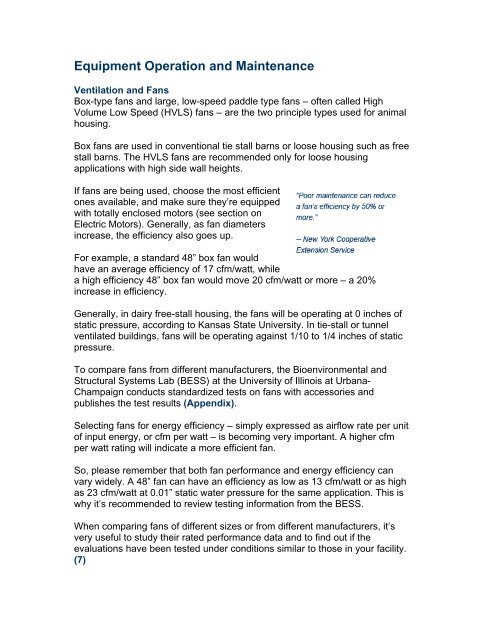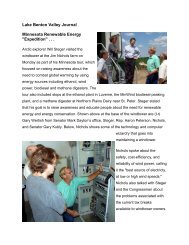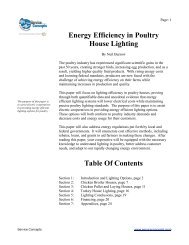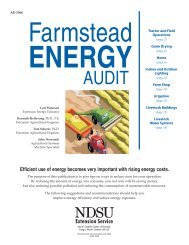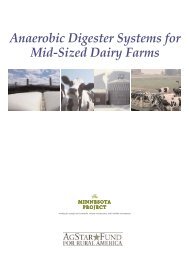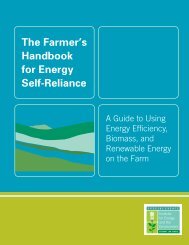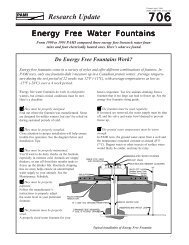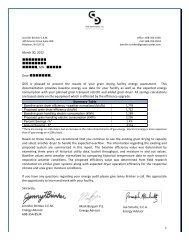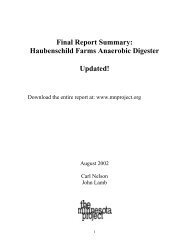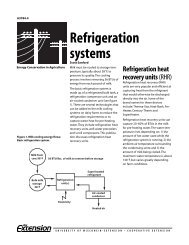Dairy Farm Energy Management Handbook - Wisconsin Department ...
Dairy Farm Energy Management Handbook - Wisconsin Department ...
Dairy Farm Energy Management Handbook - Wisconsin Department ...
Create successful ePaper yourself
Turn your PDF publications into a flip-book with our unique Google optimized e-Paper software.
Equipment Operation and Maintenance<br />
Ventilation and Fans<br />
Box-type fans and large, low-speed paddle type fans – often called High<br />
Volume Low Speed (HVLS) fans – are the two principle types used for animal<br />
housing.<br />
Box fans are used in conventional tie stall barns or loose housing such as free<br />
stall barns. The HVLS fans are recommended only for loose housing<br />
applications with high side wall heights.<br />
If fans are being used, choose the most efficient<br />
ones available, and make sure they’re equipped<br />
with totally enclosed motors (see section on<br />
Electric Motors). Generally, as fan diameters<br />
increase, the efficiency also goes up.<br />
For example, a standard 48” box fan would<br />
have an average efficiency of 17 cfm/watt, while<br />
a high efficiency 48” box fan would move 20 cfm/watt or more – a 20%<br />
increase in efficiency.<br />
Generally, in dairy free-stall housing, the fans will be operating at 0 inches of<br />
static pressure, according to Kansas State University. In tie-stall or tunnel<br />
ventilated buildings, fans will be operating against 1/10 to 1/4 inches of static<br />
pressure.<br />
To compare fans from different manufacturers, the Bioenvironmental and<br />
Structural Systems Lab (BESS) at the University of Illinois at Urbana-<br />
Champaign conducts standardized tests on fans with accessories and<br />
publishes the test results (Appendix).<br />
Selecting fans for energy efficiency – simply expressed as airflow rate per unit<br />
of input energy, or cfm per watt – is becoming very important. A higher cfm<br />
per watt rating will indicate a more efficient fan.<br />
So, please remember that both fan performance and energy efficiency can<br />
vary widely. A 48” fan can have an efficiency as low as 13 cfm/watt or as high<br />
as 23 cfm/watt at 0.01” static water pressure for the same application. This is<br />
why it’s recommended to review testing information from the BESS.<br />
When comparing fans of different sizes or from different manufacturers, it’s<br />
very useful to study their rated performance data and to find out if the<br />
evaluations have been tested under conditions similar to those in your facility.<br />
(7)


